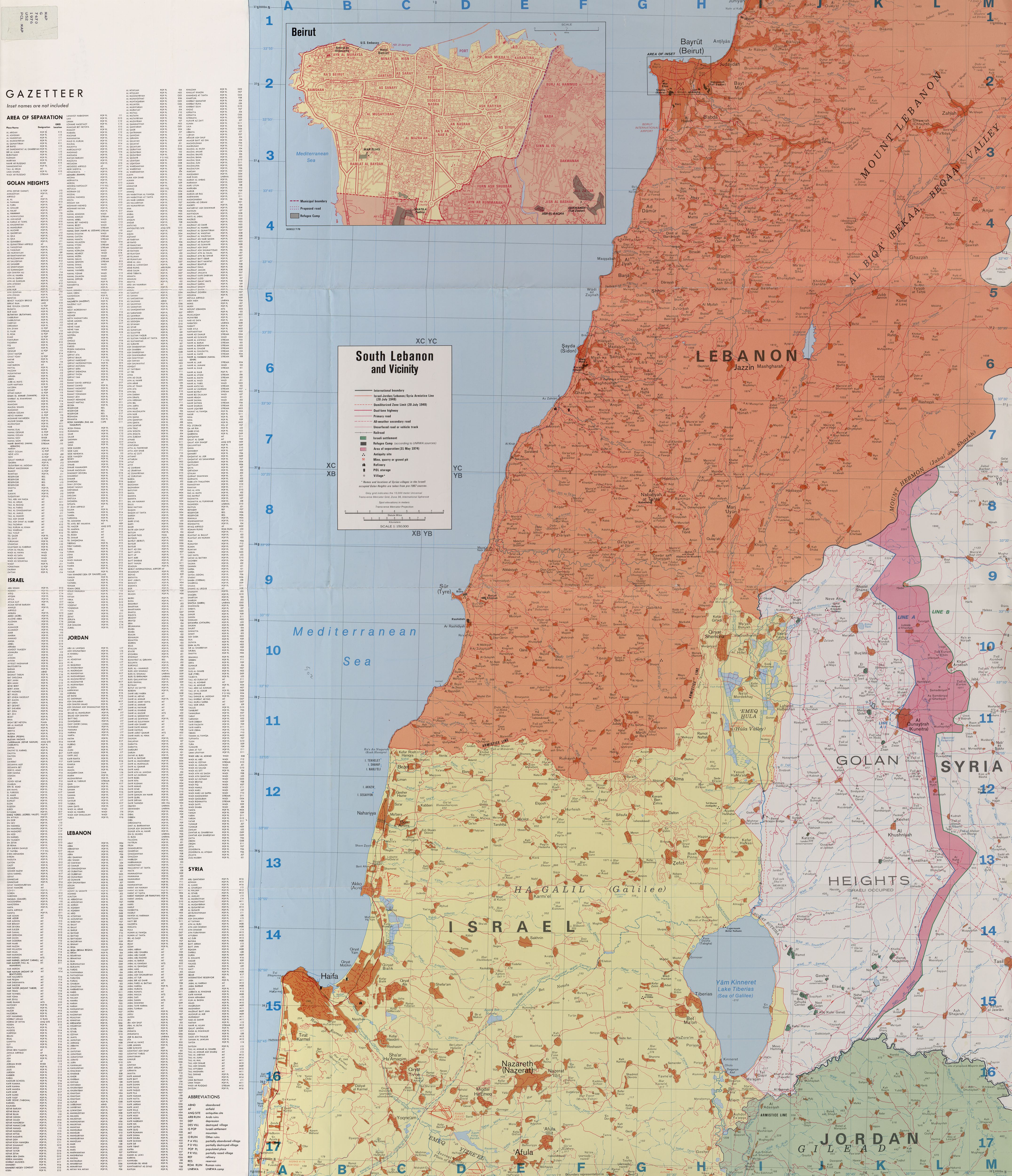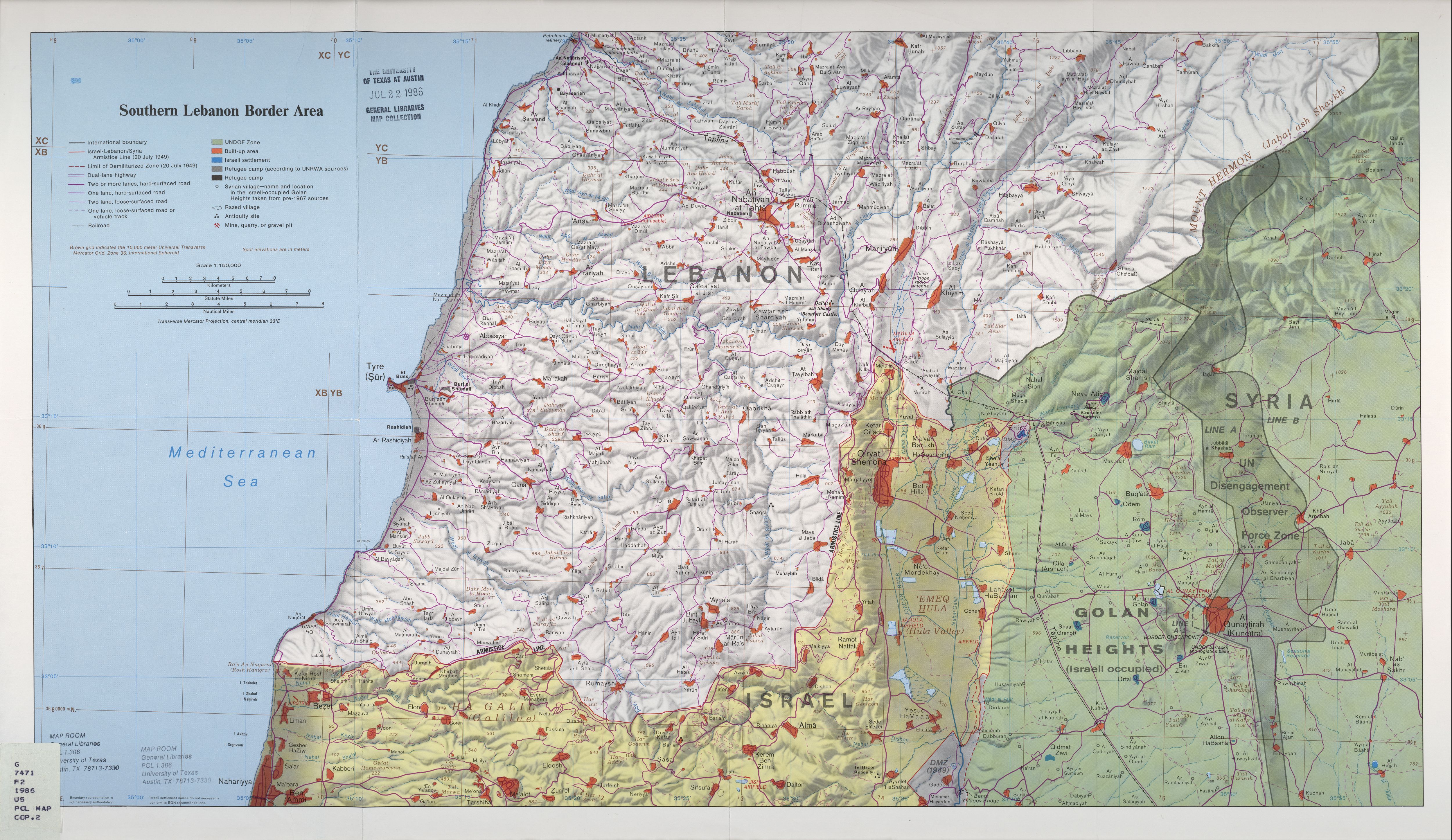| rdfs:comment
| - Sebelum Perang Enam Hari dan Perang Yom Kippur, terdapat 312 kawasan permukiman, termasuk 2 kota, 163 desa, dan 108 lahan pertanian di Dataran Tinggi Golan. Pada tahun 1966, jumlah penduduk Suriah di Dataran Tinggi Golan diperkirakan sebanyak 147.613 jiwa. Israel menduduki sekitar 70% Dataran Tinggi Golan menjelang berakhirnya Perang Enam Hari. Banyak penduduk yang mengungsi saat perang berkecamuk atau diusir oleh tentara Israel. Sejumlah penduduk dievakuasi oleh tentara Suriah. Garis gencatan senjata ditetapkan dan sebagian besar Dataran Tinggi Golan dikuasai oleh militer Israel, termasuk kota Quneitra, 139 desa, dan 61 lahan pertanian. Sensus Penduduk 1967 yang dilakukan oleh Pasukan Pertahanan Israel hanya mencantumkan delapan permukiman, termasuk Quneitra. Salah satu desa berpenghuni y (in)
- Before the Six-Day War and Yom Kippur War, the Golan Heights comprised 312 inhabited areas, including 2 towns, 163 villages, and 108 farms. In 1966, the Syrian population of the Golan Heights was estimated at 147,613. Israel seized about 70% of the Golan Heights in the closing stages of the Six-Day War. Many of these residents fled during the fighting, or were driven out by the Israeli army, and some were evacuated by the Syrian army. A cease-fire line was established and large parts of the region came under Israeli military control, including the town of Quneitra, about 139 villages and 61 farms. Of these, the Census of Population 1967 conducted by the Israeli Defence Forces listed only eight, including Quneitra. One of the remaining populated villages, Shayta, was partially destroyed in (en)
- Innan 1967 bestod syriska samhällen på Golanhöjderna av 2 städer, 163 byar och 108 bondgårdar. 1966 bestod den syriska befolkningen på Golanhöjderna av 147 613 invånare.Israel ockuperade cirka 70 % av Golanhöjderna vid slutet av Sexdagarskriget. De flesta av invånarna flydde området under konflikten och vissa blev evakuerade av den syriska armén, eller utdrivna av den israeliska armén. (sv)
|
| has abstract
| - Sebelum Perang Enam Hari dan Perang Yom Kippur, terdapat 312 kawasan permukiman, termasuk 2 kota, 163 desa, dan 108 lahan pertanian di Dataran Tinggi Golan. Pada tahun 1966, jumlah penduduk Suriah di Dataran Tinggi Golan diperkirakan sebanyak 147.613 jiwa. Israel menduduki sekitar 70% Dataran Tinggi Golan menjelang berakhirnya Perang Enam Hari. Banyak penduduk yang mengungsi saat perang berkecamuk atau diusir oleh tentara Israel. Sejumlah penduduk dievakuasi oleh tentara Suriah. Garis gencatan senjata ditetapkan dan sebagian besar Dataran Tinggi Golan dikuasai oleh militer Israel, termasuk kota Quneitra, 139 desa, dan 61 lahan pertanian. Sensus Penduduk 1967 yang dilakukan oleh Pasukan Pertahanan Israel hanya mencantumkan delapan permukiman, termasuk Quneitra. Salah satu desa berpenghuni yang tersisa, Shayta, dihancurkan separuhnya pada tahun 1967 dan digantikan oleh pos militer. Pada tahun 1971–72, desa ini dihancurkan sepenuhnya dan penduduknya dipindahkan ke , desa berpenghuni lain yang dikuasai Israel. Kepala Survei dan Pengawasan Penghancuran Dataran Tinggi Golan Israel mengusulkan penghancuran 127 desa kosong, 90 di antaranya langsung dihancurkan setelah 15 Mei 1968. Penghancuran dilakukan oleh kontraktor yang dipekerjakan pemerintah Israel. Setelah hancur, tanahnya dibagi-bagi ke pemukim Israel. Pemerintah waktu itu berencana melestarikan bangunan bersejarah dan bangunan yang berguna untuk keperluan pemukim Israel. Usai Perang Yom Kippur 1973, sebagian Dataran Tinggi Golan yang diduduki Israel dikembalikan ke Suriah, termasuk Quneitra, daerah rebutan saat perang. Menurut Komite Khusus Perserikatan Bangsa-Bangsa, militer Israel sengaja menghancurkan kota ini sebelum menarik diri pada tahun 1974. (in)
- Before the Six-Day War and Yom Kippur War, the Golan Heights comprised 312 inhabited areas, including 2 towns, 163 villages, and 108 farms. In 1966, the Syrian population of the Golan Heights was estimated at 147,613. Israel seized about 70% of the Golan Heights in the closing stages of the Six-Day War. Many of these residents fled during the fighting, or were driven out by the Israeli army, and some were evacuated by the Syrian army. A cease-fire line was established and large parts of the region came under Israeli military control, including the town of Quneitra, about 139 villages and 61 farms. Of these, the Census of Population 1967 conducted by the Israeli Defence Forces listed only eight, including Quneitra. One of the remaining populated villages, Shayta, was partially destroyed in 1967 and a military post built in its place. Between 1971–72 it was destroyed completely, with the remaining population forcibly transferred to Mas'ade, another of the populated villages under Israeli control. The Israeli Head of Surveying and Demolition Supervision for the Golan Heights proposed the demolition of 127 of the unpopulated villages, with about 90 abandoned villages to be demolished shortly after May 15, 1968. The demolitions were carried out by contractors hired for the job. After the demolitions, the lands were given to Israeli settlers. There was an effort to preserve buildings of archaeological significance and buildings useful for the planned Jewish settlements. After the 1973 Yom Kippur War, parts of the occupied Golan Heights were returned to Syrian control, including Quneitra, which had changed hands several times during the war. According to a United Nations Special Committee, Israeli forces had deliberately destroyed the city before their 1974 withdrawal. (en)
- Innan 1967 bestod syriska samhällen på Golanhöjderna av 2 städer, 163 byar och 108 bondgårdar. 1966 bestod den syriska befolkningen på Golanhöjderna av 147 613 invånare.Israel ockuperade cirka 70 % av Golanhöjderna vid slutet av Sexdagarskriget. De flesta av invånarna flydde området under konflikten och vissa blev evakuerade av den syriska armén, eller utdrivna av den israeliska armén. En israelisk överhuvud för demoleringarna i Golanhöjderna föreslog att demolera 127 av de syriska byarna och att 90 av dessa skulle börja demoleras strax efter 15 maj 1968. Demoleringarna utfördes av byggentreprenörer som hade anlitats för jobbet. Efter demoleringarna gavs marken till israeliska bosättare. Det fanns en strävan att bibehålla vissa byggnader av arkeologisk betydelse och byggnader som kunde användas för de planerade israeliska bosättningarna. Efter Oktoberkriget lämnades en mindre del av de ockuperade Golanhöjderna tillbaka till Syrien, inklusive staden Quneitra. Enligt en av FN tillsatt specialkommitté hade Israel avsiktligen förstört Quneitra innan de drog sig tillbaka från staden 1974. (sv)
|



![[RDF Data]](/fct/images/sw-rdf-blue.png)









![[cxml]](/fct/images/cxml_doc.png)
![[csv]](/fct/images/csv_doc.png)
![[text]](/fct/images/ntriples_doc.png)
![[turtle]](/fct/images/n3turtle_doc.png)
![[ld+json]](/fct/images/jsonld_doc.png)
![[rdf+json]](/fct/images/json_doc.png)
![[rdf+xml]](/fct/images/xml_doc.png)
![[atom+xml]](/fct/images/atom_doc.png)
![[html]](/fct/images/html_doc.png)